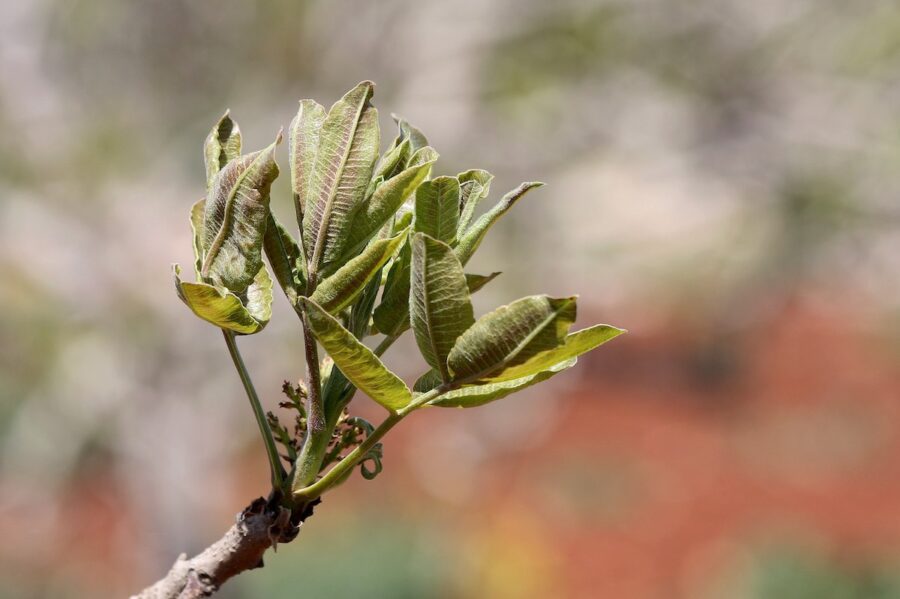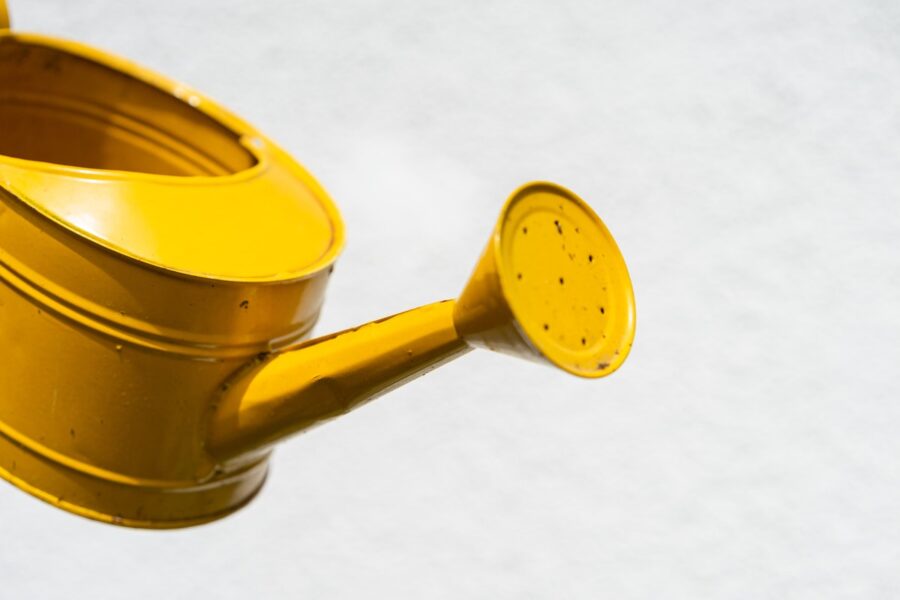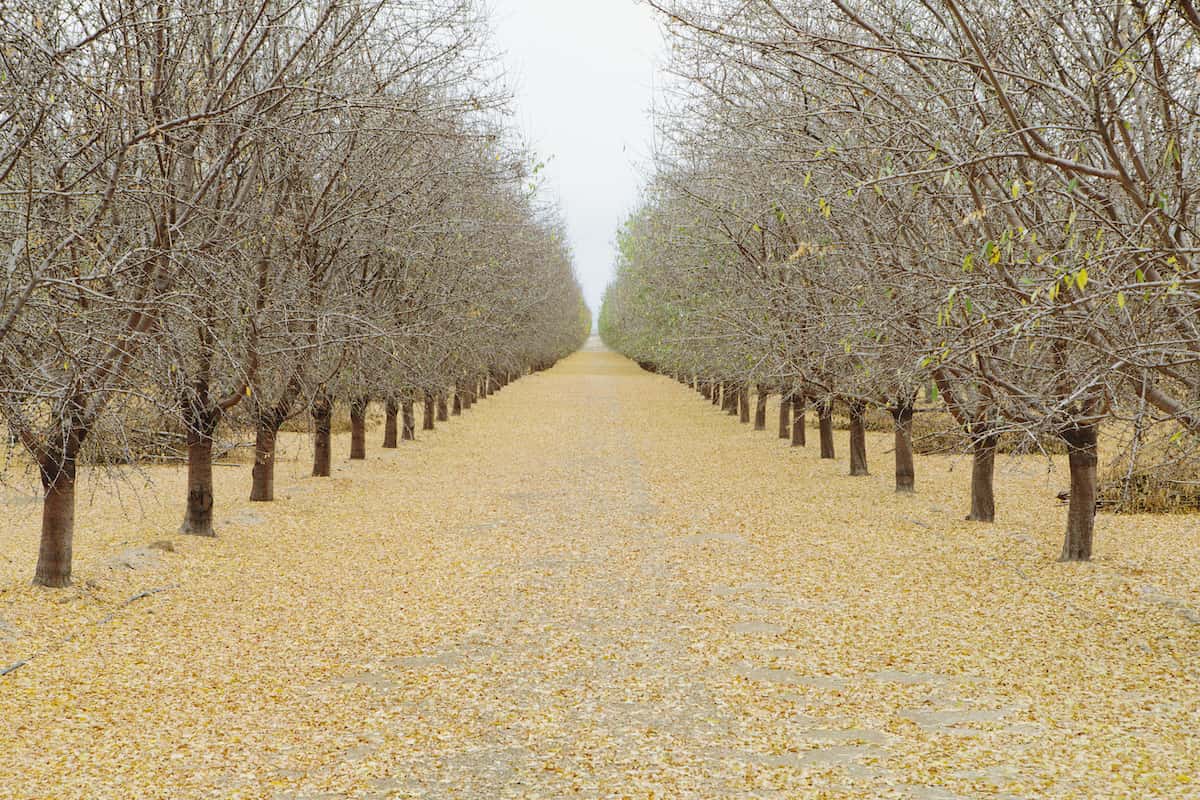The pistachio, scientifically known as Pistacia vera, is a small tree that belongs in the same family as cashew, which traces its origin in Central Asia and the Middle East. It’s the tree that produces the highly acclaimed and nutritious pistachio seeds and nuts, which are simply known as pistachios.
Pistachios are widely used in diverse cuisines worldwide. They’re ranked alongside cashews, almonds, and macadamias in terms of nutritional profile.
Now, the Pistacia vera species is commonly confused with other plants in the Pistacia genus. However, these plants are easily distinguishable in terms of their geographical distributions in nature and the size of their seeds. Unlike Pistacia vera, other common species in the Pistacia genus produce significantly smaller seeds characterized by softer shells.
If you’ve always been toying with the idea of cultivating the pistachio tree but have never mustered enough courage to do so, now is your chance. We’ve prepared a detailed guide into growing pistachios, right from planting through harvesting. But first things first.
Table of Contents
Scientific Classification
The pistachio tree falls in the following taxonomic unit:
• Kingdom: Plantae
• Phylum: Spermatophyta
• Subphylum: Angiospermae
• Class: Dicotyledonae
• Order: Sapindales
• Family: Anacardiaceae
• Genus: Pistacia
• Species: Pistacia vera
Benefits of Growing the Pistachio Tree
We would be lying if we said that the pistachio tree is easy to cultivate. Although it’s considered a relatively hardy plant, the pistachio requires dedicated attention throughout its growth cycle. Not to mention, the tree takes years to produce its first nuts.
Most pistachio modified strains take between 5 and 8 years to reach their fruit-bearing stage. However, some pistachios may take up to 15 years to realize a full harvest. So, unless you’re patient enough to wait that long, you should probably consider other nut-producing trees.
That said, cultivating pistachios at home can be a handsomely rewarding venture. That’s especially if your trees are able to reach full maturity and start to produce nuts.
Pistachio nuts are particularly acclaimed for their low calorie content. The nuts present close to ZERO risks of weight gain or cardiovascular problems that typically result from high-calorie diets.
Besides being incredibly low on calories, pistachios are also rich in powerful phytonutrients and antioxidants, including carotenoids and phytosterols. These antioxidant compounds work synergistically to lower the risks of disease resulting from oxidative stress. Oxidative stress is a medical term for the phenomenon caused by an imbalance between the synthesis and accumulation of free radicals in body cells and tissues, and the ability of the body to detoxify these reactive products. Higher accumulation of free radicals in body cells is a leading cause of chronic diseases and premature aging. Other notable nutrients and minerals in pistachio nuts include fiber and unsaturated fat.
What’s more, pistachio nuts are ever in demand. So, if you’re able to produce more nuts than you can consume at home, you can always offer the extra ones for sale. Currently, the trees are commercially produced mainly in Iran, Turkey, Italy, Afghanistan, and Syria, where the climate is considered favorable.
Tips for Growing the Pistachio Tree At Home

1. Know the Varieties
As we already indicated, the Pistacia genus produces several different species. However, only the Pistacia vera is commercially cultivated.
But the most important thing to note here is that even the Pistacia vera species is available in numerous cultivars.
The following are common variants of the vera pistachios that do well in the United States, which you might consider cultivating:
i. Platinum
Platinum is a vera clone that was developed in the wake of the verticillium wilt which nearly wiped out all commercial pistachio crops in America. It’s noted for its incredible ability to handle cold.
ii. Pioneer Gold
This is another clone famous for its remarkable wilt resistance. It’s currently the most widely cultivated Pistacia vera strain in the U.S.
iii. Red Aleppo
As the name implies, the Red Aleppo cultivar originated in Syria. Although it’s named after Syria’s war-torn Aleppo city, this variant’s reputation is a far cry from that of Aleppo city. The tree blooms early, after which the flowers give way to yummy, crunchy fruits.
iv. Kerman
Kerman is a relatively new clone in the U.S, having been imported from Iran more recently. The tree is distinguishable by its large, bright-green fruits, the first of which appear in six years.
v. Joley
This Pistacia vera species may not be the right option if you’re looking to cultivate the plant exclusively for commercial purposes. That’s due to its relatively smaller fruits. However, it’s a better option in terms of overall care, compared to other vera cultivars.
2. Understand the Phenotypic Characteristics
The pistachio tree typically grows up to 10 meters (33 feet). Mature pistachios have deciduous pinnate leaves that can grow to be as long as 10–20 centimeters (4–8 inches).
Pistachios are dioecious plants. In other words, male and female trees occur independently.
When in bloom, the pistachio tree produces apetalous and unisexual flowers. The flowers give way to drupes (fruits) containing the flavorful, edible pistachio seed (nut). The exterior shell of pistachio drupes are hard and cream-colored while the seeds have a mauve-colored skin, with light-green flesh. A single pistachio tree can produce around 50 kilograms (110 pounds) of seeds in one season.
However, note that there might be slight differences in physical characteristics of your pistachio trees. These minor variations largely depend on the specific strains you cultivate. The climatic conditions you grow your pistachio trees in, as well as the amount of care you give to the plants, may also cause the trees to have slight phenotypic differences.
3. Understand Pistachio’s Natural Habitat
Pistachios are generally considered wild nuts. That’s probably due to the harsh climatic conditions in which they naturally thrive. To succeed in cultivating these trees at home, you’ll need to mimic their natural habitats as much as possible.
Now, the pistachio is a desert crop that does exceedingly well in saline, well-drained soils. The plant can easily withstand temperatures as low as −10 °C (14 °F) and as high as 48 °C (118 °F).
Pistachio trees are fairly unsuited for humid conditions. A little too much moisture and their roots will start to rot.
You may not be able to fully achieve the ideal conditions under which pistachios thrive in the wild. But you can still implement the following additional tips to ensure a bumpy harvest each time.
4. Plant Pistachios in Pairs
Pistachio trees are available as either male or female plants. To grow this tree, you’ll need to have both male and female crops in your garden. This will help with pollination.
The ideal ratio should be one male pistachio for every 15 female trees.
However, note that pistachios are unisex. Therefore, you may never know which sex your trees are until they reach their fruit-bearing stage.
The only way to determine the sex of your pistachio trees beforehand is by purchasing grafted cutting or sapling.
Besides planting pistachios in pairs, the following are other aspects to consider during the planting stage:
i. Planting Seedlings versus Seeds
You can either buy pistachio seedlings from a nursery or grow the trees from their seeds. Experts recommend going for seedlings as growing pistachios from seeds is a bit more demanding.
Most pistachio trees are sold in biodegradable containers. It’s recommended to dig a hole that’s large enough to accommodate the entire container. Also, remember to handle your seedlings with care as their budded tops tend to be a bit fragile.
But what if you decide to grow pistachios from seeds
For starters, you’ll need to purchase raw pistachio seeds from a reputable supplier. Insist on unsalted and unroasted seeds.
Once you have your pistachio seeds, proceed as follows:
a) Fill a plastic bag with a damp paper towel and bury a few seeds inside the damp towel.
b) Poke a couple of holes in the bag to allow for air circulation.
c) Keep the bag at room temperature and in spots with minimal foot traffic.
d) Wait for a few weeks for the seeds to germinate.
e) After the sprouts emerge from the seeds, transplant them into a small cup or container.
f) Fill the container with soil and poke drainage holes underneath it.
g) Water the seeds for the next few years to keep them warm.
h) You may need to transplant the seeds to a larger pot before ultimately transplanting them to your garden.
ii. Spacing
It’s best to plant pistachio trees 12 to 20 feet apart. Also, be sure to leave up to 20 feet between rows.
This will reduce overcrowding and the competition for nutrients. Remember that pistachios can grow to be quite large.
Experts also recommend checking ahead of time to ensure there’s nothing that might hinder the trees’ vertical growth, such as electrical wires and phone poles.
5. Adopt a Proper Care and Maintenance Plan

Planting pistachio trees is only half the work. The other half involves ongoing care and maintenance.
Here are a few factors to bear in mind to ensure the healthy growth of your pistachio trees:
i. Soil
Pistachio trees prefer well-drained, sandy-loam soils with a pH range between 7.1 and 7.8.
However, the trees may also do well in a variety of soils, ranging from slightly acidic to highly saline and alkaline soils.
ii. Watering and Humidity
Since pistachios naturally thrive in arid climates, you don’t need to water the plants daily or even weekly unless they’re still in their seedling stage or if the conditions are exceedingly dry.
But when you do have to water them, ensure the soil is moist up to four feet deep. Also, note that the ideal time to water pistachio trees is in the early morning when conditions are still unconducive for disease development.
In addition to infrequent watering, also keep the humidity average. Much like overwatering, prolonged periods of high humidity might also lead to disease.
iii. Sunshine and Lighting
Like most nut-bearing trees, pistachios prefer full sunshine.
They may require even more sunshine as they near their flowering phase.
iv. Temperature
Pistachios are wired to thrive in desert climates where temperatures can get excruciatingly hot during the day. These plants typically do well in temperatures over 100 degrees Fahrenheit.
Pistachios are also known to go dormant when winter rolls in. Temperatures around 45 degrees Fahrenheit or below is sure enough to send them into dormancy.
v. Fertilization
Being the resilient plants that they are, pistachios generally don’t require regular fertilizing.
But if you suspect that your pistachio trees are growing too slowly, administering a 10-10-10 fertilizer once a year might help to jumpstart them.
The best time to fertilize pistachios is during spring when there are minimal risks of frost.
vi. Pruning
Pruning pistachios serves two crucial purposes.
First, it helps remove unwanted leaves or branches that could slow down their growth. Secondly, pruning shapes your pistachio trees, thereby facilitating harvesting.
However, remember that most pistachio trees don’t need heavy pruning. Over-pruning may reduce nut production.
vii. Pests and Diseases
Pistachios are susceptible to numerous pests and diseases. Common pests include the navel orangeworm, oblique-banded leafroller, citrus flat mite, soft scales, and mealybugs.
Not only do these pests feed on healthy pistachio leaves. Some of them may also spread disease. Common pistachio diseases include botrytis, alternaria late blight, verticillium wilt, phytophthora root rot, septoria leaf spot, powdery mildew, pistachio psyllid, and oak root fungus.
The most effective way to control pistachio pests and diseases is by applying organic pesticides.
Harvesting
Pistachios typically ripen in late August and September the world over. You can tell that the harvesting season is drawing near when the hulls begin to lose their green hues and become more pinkish-yellow.
Pistachio nuts are fully ripe when their epicarps start to separate from the inner shell. It’s at this point that you can proceed to harvest the nuts.
Conclusion
Pistachios are relatively more difficult to cultivate than many other nut-producing trees. However, growing pistachios at home isn’t entirely impossible. All it takes is implementing conditions that mimic the tree’s natural habitat.

